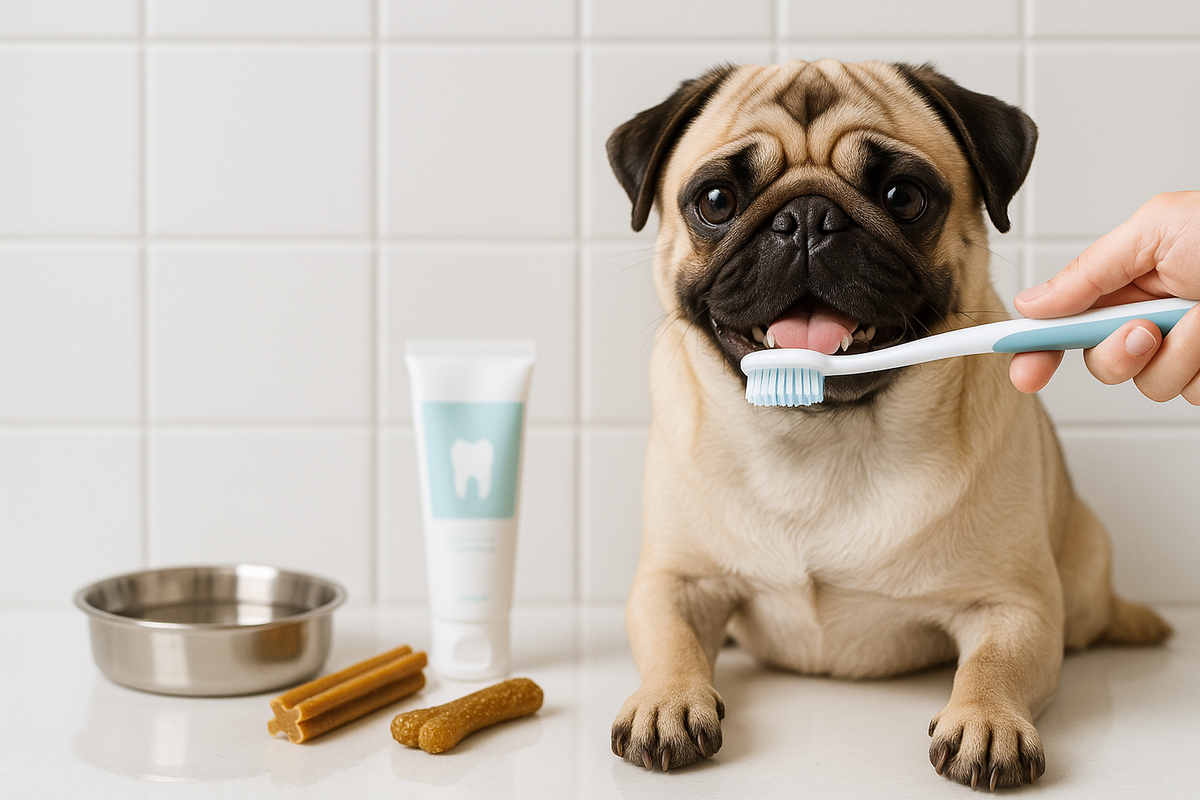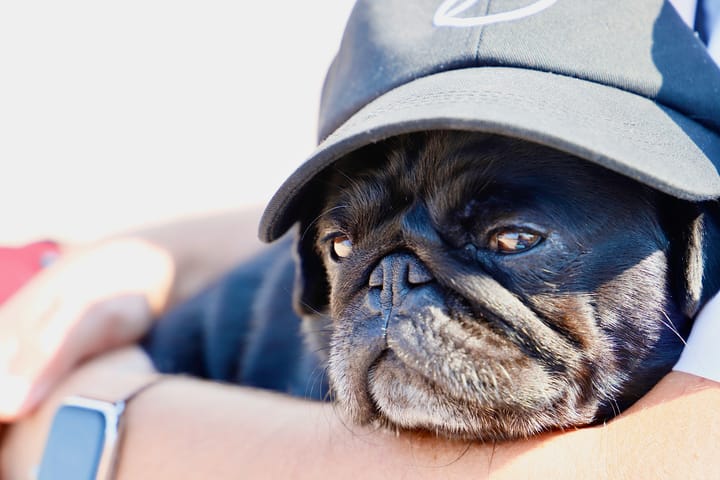Dental Care for Pugs: Keep Your Pug’s Smile Healthy & Happy
In this Club Pug guide, we’ll walk you through everything you need to know about pug dental care, including how often to brush, signs of trouble, best products, what to expect from dental cleanings, and which type of vet is best suited to perform this procedure.

Proper dental care is one of the most overlooked—but critical—parts of pug health. Pugs are prone to dental disease due to their flat faces (brachycephalic structure), crowded teeth, and love of soft food. Left untreated, dental problems in pugs can lead to pain, infection, and serious health complications like heart and kidney issues. In this Club Pug guide, we’ll walk you through everything you need to know about pug dental care, including how often to brush, signs of trouble, best products, what to expect from dental cleanings, and which type of vet is best suited to perform this procedure.
🐶 Why Dental Care Is So Important for Pugs
Pugs have short muzzles and tightly spaced teeth, making it easier for food and bacteria to get trapped. Without routine cleaning, plaque builds up and hardens into tartar, leading to:
- Gum disease (periodontal disease)
- Tooth decay and loss
- Chronic bad breath
- Painful chewing or eating habits
- Systemic infections
More than 80% of dogs show signs of dental disease by age 3—and pugs are especially vulnerable. What's more, dental cleaning for dogs most certainly will require anesthesia, which is a particular concern for pugs and other brachycephalic breeds. So if you and your puggy can get into a good routine of dental care, you may be able to lessen the likelihood of anesthesia for dental reasons.
🪥 How to Brush Your Pug’s Teeth
Step-by-Step:
- Use a toothbrush (traditional style or finger style) or finger dental wipes to clean the surface of teeth.
- Choose enzymatic dog toothpaste—never use human toothpaste (it’s toxic to dogs). However, if puggy won't tolerate toothpaste, it's not the end of the world, the important thing is that you're using a brush or wipe to regularly clean puggy's teeth.
- Gently lift your pug’s lip and brush in circular motions.
- Focus on the outer surfaces—this is where most plaque collects.
- Aim for at least 3 times per week—daily is ideal.
💡 Tip: Start slow and use treats to build positive associations with brushing.
🔍 Signs of Dental Problems in Pugs
Keep an eye out for these warning signs:
- Bad breath (more than usual)
- Red or swollen gums
- Yellow or brown tartar buildup
- Reluctance to chew or eat
- Drooling or pawing at the mouth
- Loose or missing teeth
If you notice any of these, schedule a vet check immediately.
🏥 Do Pugs Need Professional Dental Cleanings?
It's a simple question with a complicated answer that's best addressed by your vet, specifically with respect to your pug. With regular brushing you can minimize the need for a professional dental cleaning (as these cleanings require anesthesia), but even with regular cleanings, puggy may need to have a professional dental cleaning by either your regular vet or a board certified veterinary dentist.
🧑⚕️ Regular Vet vs. Board-Certified Veterinary Dentist: What’s the Difference?
Option 1: Regular Veterinarian
Most general practice vets offer dental cleanings, often at a more affordable price. This can be a good option if:
- Your pug is relatively healthy and has no other respiratory issues,
- The cleaning is preventative or mild, and
- The vet has experience with brachycephalic breeds
🟢 Pros:
- Lower cost
- Less waiting time for procedure
- Familiar environment
- Convenient for ongoing care
🔴 Cons:
- May not include dental X-rays
- May not be able to perform advanced surgical options for any complications or unforeseen outcomes
- Varying skill levels in complex oral procedures
Option 2: Board-Certified Veterinary Dentist
A veterinary dentist is a specialist with advanced training in dentistry and oral surgery.
This may be a better option if:
- Your pug has advanced dental disease
- Teeth need extraction or oral surgery
- Your pug has known respiratory issues (for example collapsing trachea or larynx) or other medical complications
- You are concerned about anesthesia risk
- You want X-rays and detailed diagnostics
🟢 Pros:
- Advanced tools, imaging, and anesthesia monitoring
- Better outcomes for complex issues
- Expertise in airway management for brachycephalic dogs.
- May be part of a full service animal hospital that offers board certified anesthesiologists or specific respiratory expertise in case of complications, which unfortunately, are more likely with brachycephalic dogs.
🔴 Cons:
- More expensive
- Scheduling is more difficult, often requiring several months to even get a first consultation appointment
- May require travel or referral
🐾 Dental Tips for Pugs at Every Life Stage
- Puppies: Start brushing early to build tolerance. Use finger brushes and soft chews.
- Adults: Maintain brushing 3–7x per week and have your vet regularly assess teeth and the need for cleaning.
- Seniors: Watch for loose teeth, gum disease, or pain. Soften food if needed.
✅ Summary: Dental Care Routine for a Healthy Pug Smile
| Task | Frequency |
|---|---|
| Brush teeth | 3–7x per week |
| Offer dental chews | 2–4x per week |
| Use water additives | Daily (optional) |
| Professional dental cleaning | As recommended by vet |
🐕🦺 Final Thoughts: Don’t Ignore Your Pug’s Teeth
A clean mouth is key to a long, happy life for your pug. With the right tools, consistent brushing, and regular vet care, you can prevent painful dental issues, minimize the need for dental cleanings and anesthesia, and keep your pug’s smile bright for years to come.



Comments ()